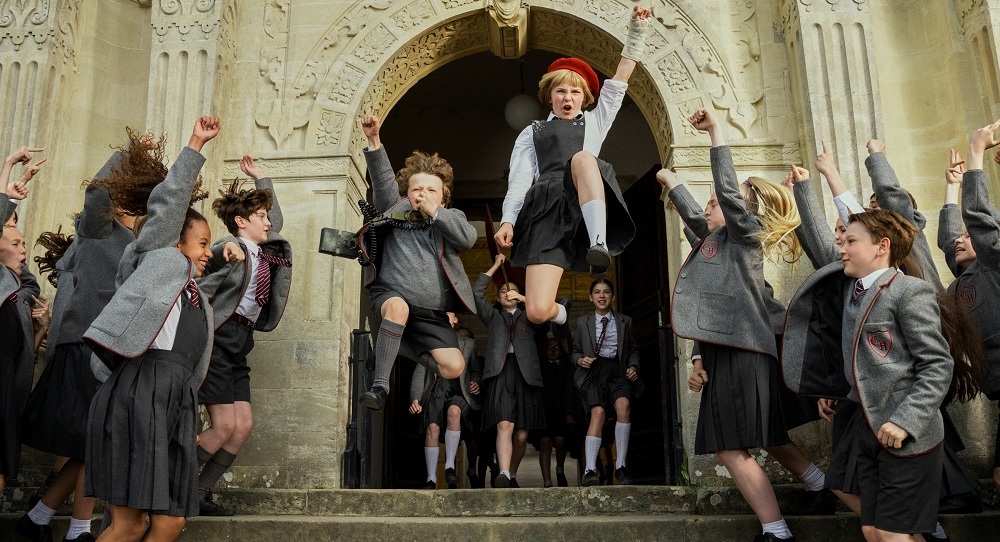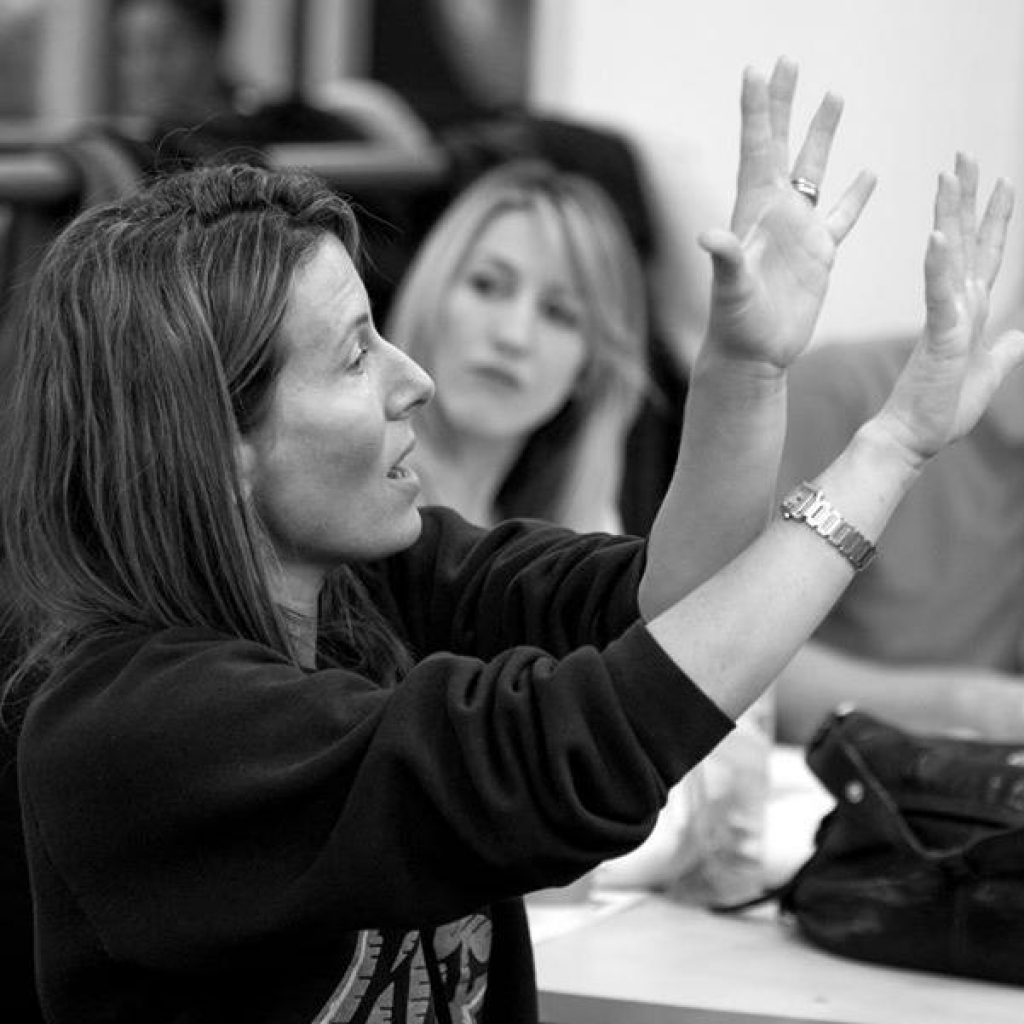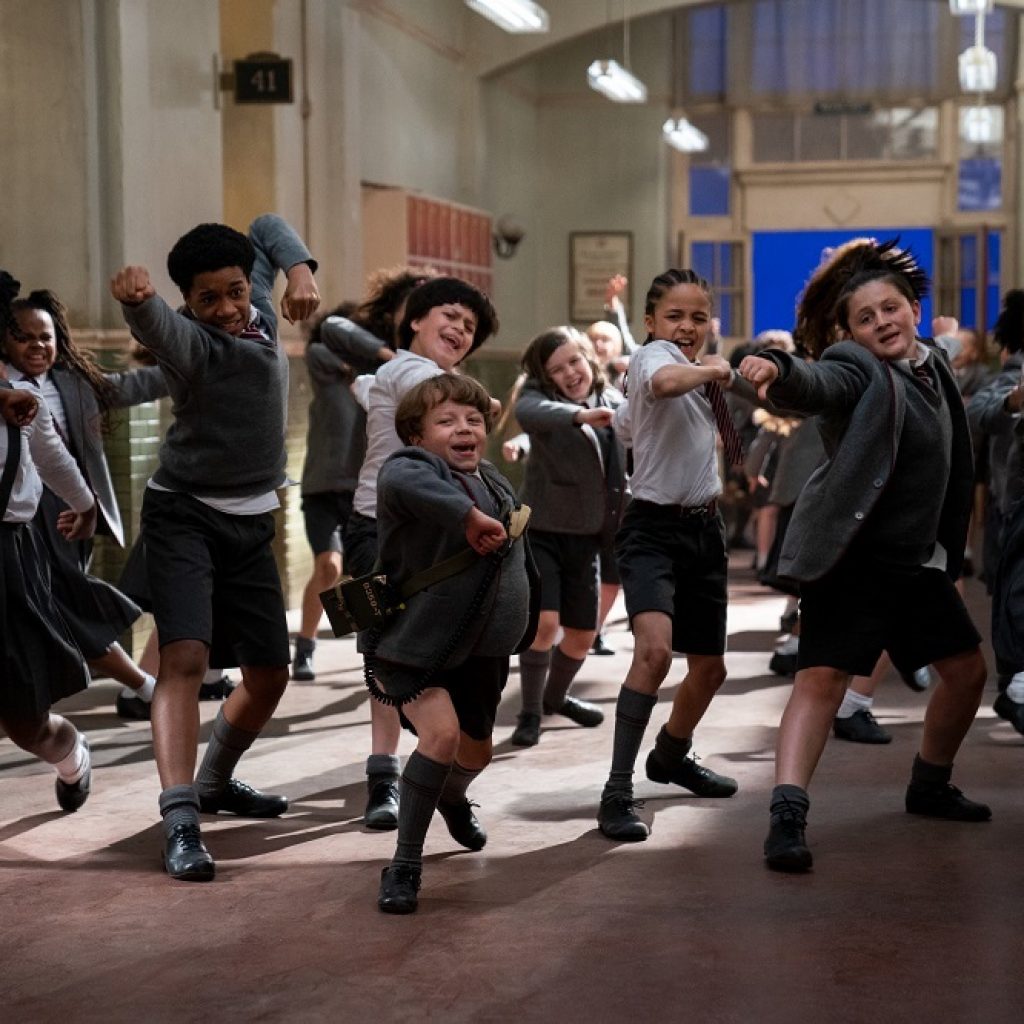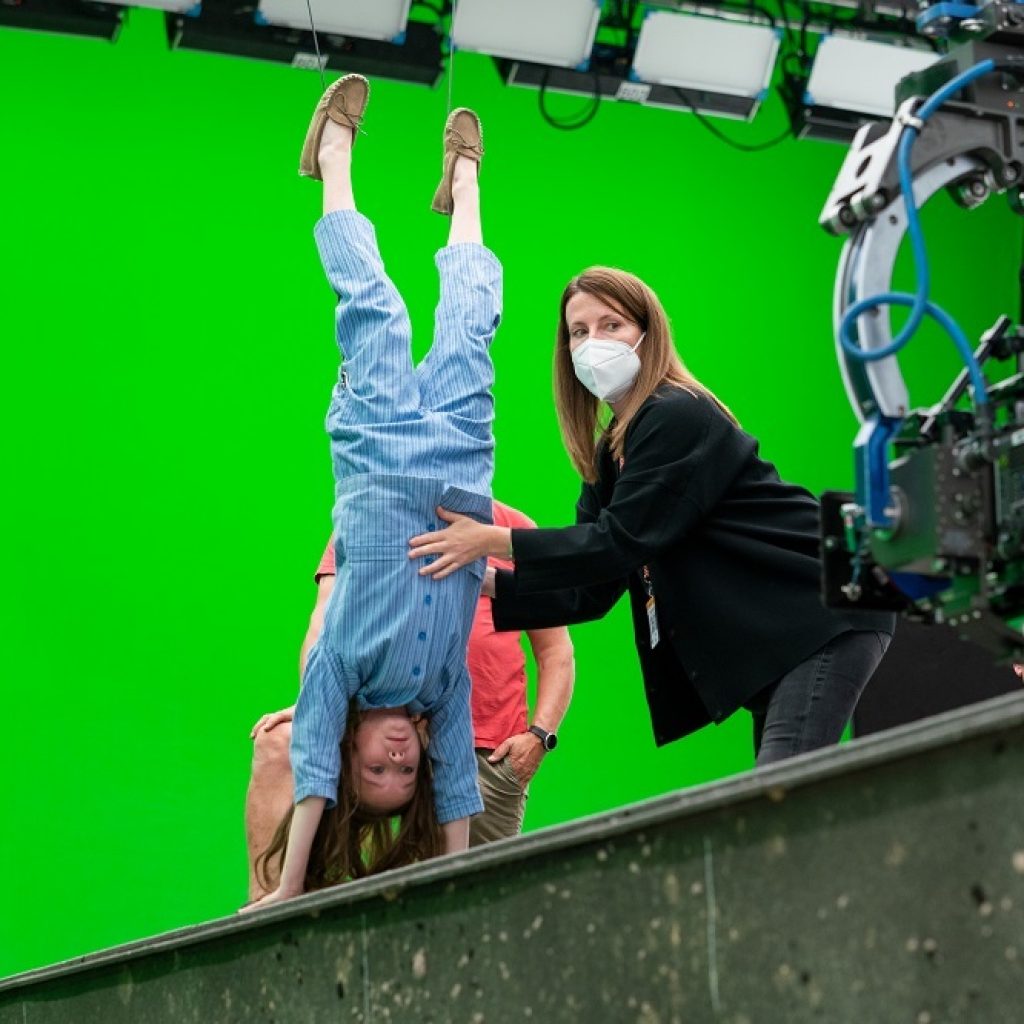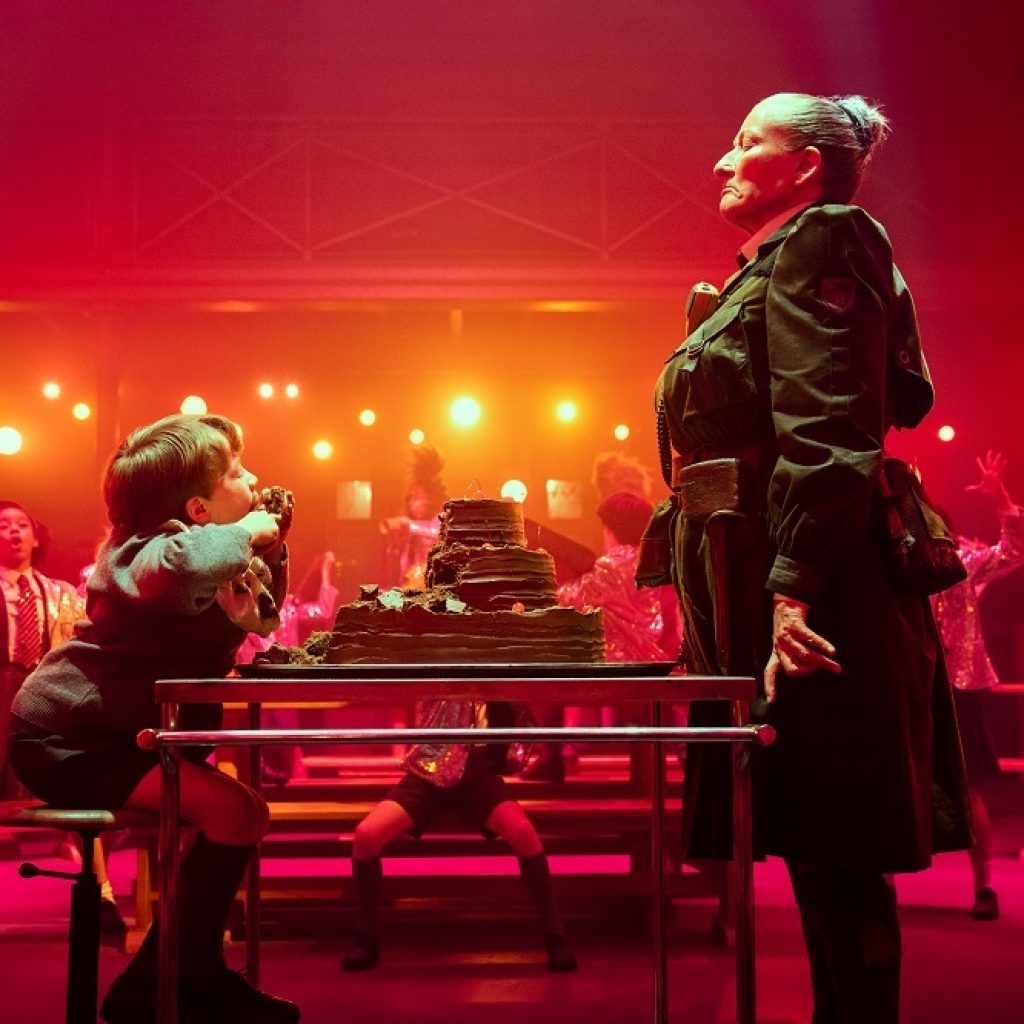London-based choreographer Ellen Kane has an extensive resume both on stage and screen. She choreographed Legally Blonde, A Chorus Line and West Side Story in London. Most recently, she choreographed the Netflix film, Matilda the Musical. This stage-to-screen adaptation is bursting with energy and childlike wonder, highlighted by its brilliant choreography. Dance Informa had the privilege of chatting with Kane about her role in bringing Matilda to life.
As a pre-teen, Kane participated in a local dance club where she began making up dances for the participants. At age 16, she decided to study dance in college where she trained in all styles — contemporary, ballet, jazz and tap. As a performer, Kane was a “modern dance girl” and, interestingly, had no association with musical theater.
Kane explains, “It was only at the end of my performing career that I found musical theater. I met an incredible choreographer, Peter Darling. He was working on the show Billy Elliot and was looking for someone who could teach the children. That’s how my journey in musical theater began. He’s been one of my dearest friends ever since, and we’ve worked together on so many things.”
Kane’s introduction to choreography was informal, but catered to her natural giftings and love of stories. “I didn’t train in choreography, but if I look back even to the dance club days, I’ve always been able to make up dances. I learned from one of the most exquisite storytellers through dance (Peter). He was an actor, not a dancer, so he came at movement from the script and asked, ‘What does the story need?’ I learned choreography in a more in-depth way of looking at stories, rather than just as abstract modern dance. It’s become so inherent in me; I’m constantly looking for stories. My challenge is how do I build that amazing number, but also deliver the perfect version of the story.”
Kane was involved in discussions for Matilda early on. “Initially, Peter was asked to do the film, but he decided it wasn’t right for him. One day, I got a call from the producers asking if I’d like to come in and chat. I thought about it for a long time. I’d wanted to do more film – I’d done Cats – so I talked about the opportunity with Peter, and came away feeling it would be really hard for me to watch the movie if I let somebody else do it. I hoped I would be able to do the story justice on film.”
Although Kane had previously worked with Darling on the stage show, the Netflix film features entirely new choreography. “No choreography from the stage show is in the movie and vice versa. But Peter and I worked together on it about 13 years ago, so I’ve lived with the story in so many different places around the world and know the emotional beats of it. Because the stage show was so successful, I took with me a bounty of knowledge that those emotional beats worked.”
Auditions for Matilda began during COVID. “During the first lockdown, we sent out a brief for kids to record themselves dancing to their favorite song,” Kane recalls. “It was amazing, because we got to see a lot of children who wouldn’t normally come to an audition. My associates went through the videos and sent me a pack of children they felt were the strongest. I was looking for flair, musicality and expression – not perfection. Once the world opened up again, we invited kids to a couple of weeks of in-person auditions.”
The Matilda cast contained nearly 300 children and required military-like scheduling. Kane surrounded herself with an incredible team, and shares insights into her method of working with children. “I’ve worked for so many years with children. I’m a firm believer that what works best is setting clearboundaries and respecting them, so everyone knows how to behave in the environment. Then it’s my responsibility to teach them well. I know how to train them in a way that keeps them healthy while also having a good time. No denying it’s hard work, but all of us came away saying, ‘Look what we made.’”
Kane’s choreography in the film portrays a lightness despite some heavy themes. When asked about this, she shares, “I always try to come from the character’s point of view. In Matilda, it’s coming from a child’s point of view. There’s an unbreakable beauty that comes from children. A sense of naivete, hope, positivity, fragility and unbounded optimism. I wanted to make the audience feel how special children are. In ‘Revolting Children,’ I told Matthew (the director) I wanted them to feel like they were superhuman – that they’re so explosively happy they can run up walls, and that’s really where the corridor sequence came from. I wanted desperately for the world to see what children can do.”
“Revolting Children” did show the world what children can do, and became a viral TikTok trend, as people quickly learned the corridor choreography. “It happened to be the clip they used in a marketing piece. We were watching a child do something in a film that we haven’t seen in a really long time. I don’t think we’ve seen that kind of power and energy since Annie or Oliver. People sent me clips from all around the world of these amazing children being inspired by power. They realized, given the right circumstance, they are powerful, beautiful humans that can create this feeling,” Kane reflects.
Kane’s work is in high demand, but she’s intentional about the projects she’s working on. “All the projects I’ve chosen to work on this year are very exciting and different. I feel it’s time to invest in myself in terms of learning – to make sure I keep growing.”
She continues, “You have to be super brave to keep learning because you must allow yourself to be vulnerable rather than just sticking with what you know. I’ve become so hungry to learn from extraordinarily brilliant people whenever possible.”
Although Kane’s hunger to learn keeps her work fresh, there’s a deeper motivation. She concludes, “I’m grateful it keeps me relevant, but most importantly, it keeps me feeling alive.”
To learn more about Kane’s work, visit ellenkane.co.uk.
By Melody McTier of Dance Informa.


